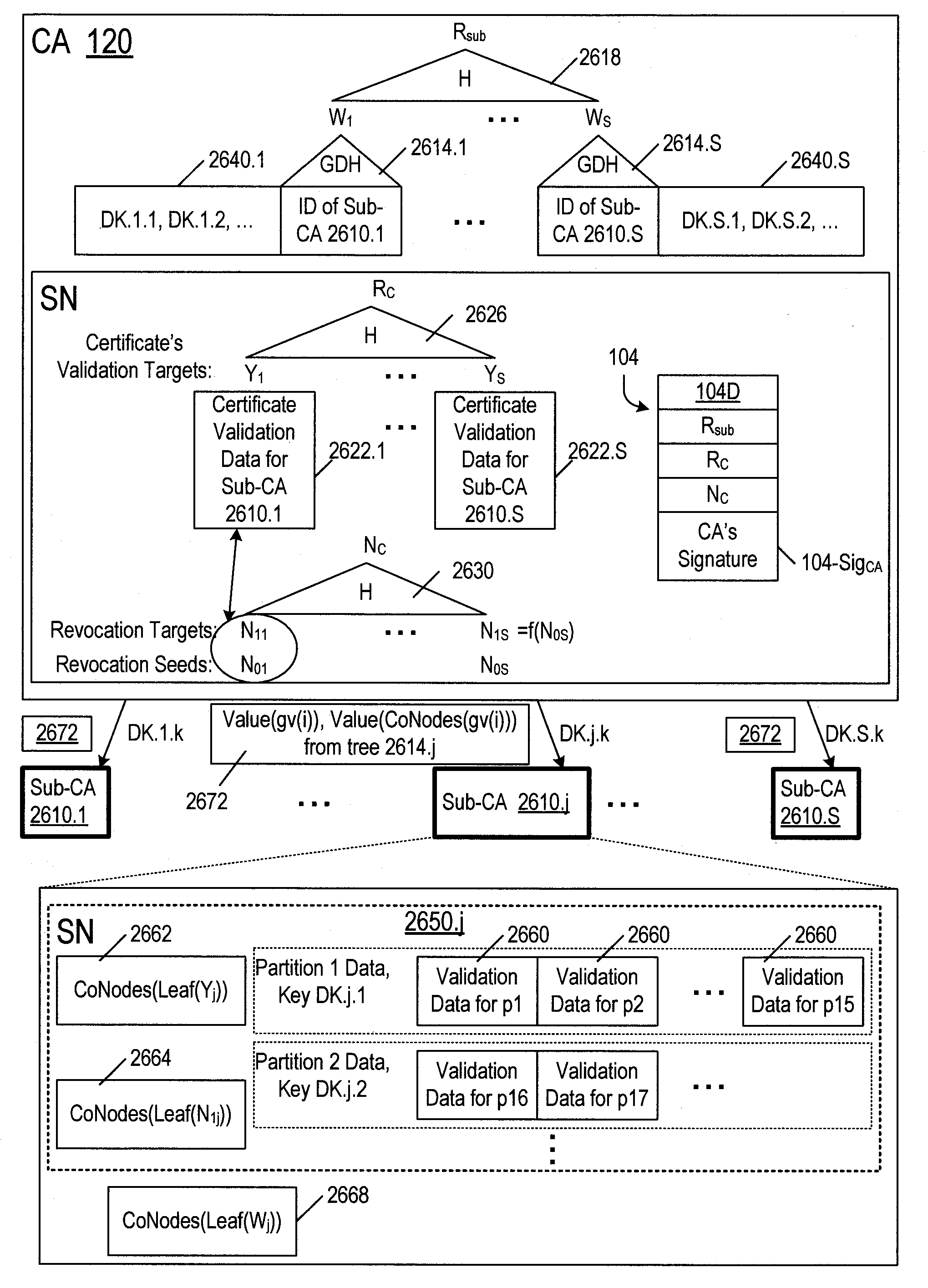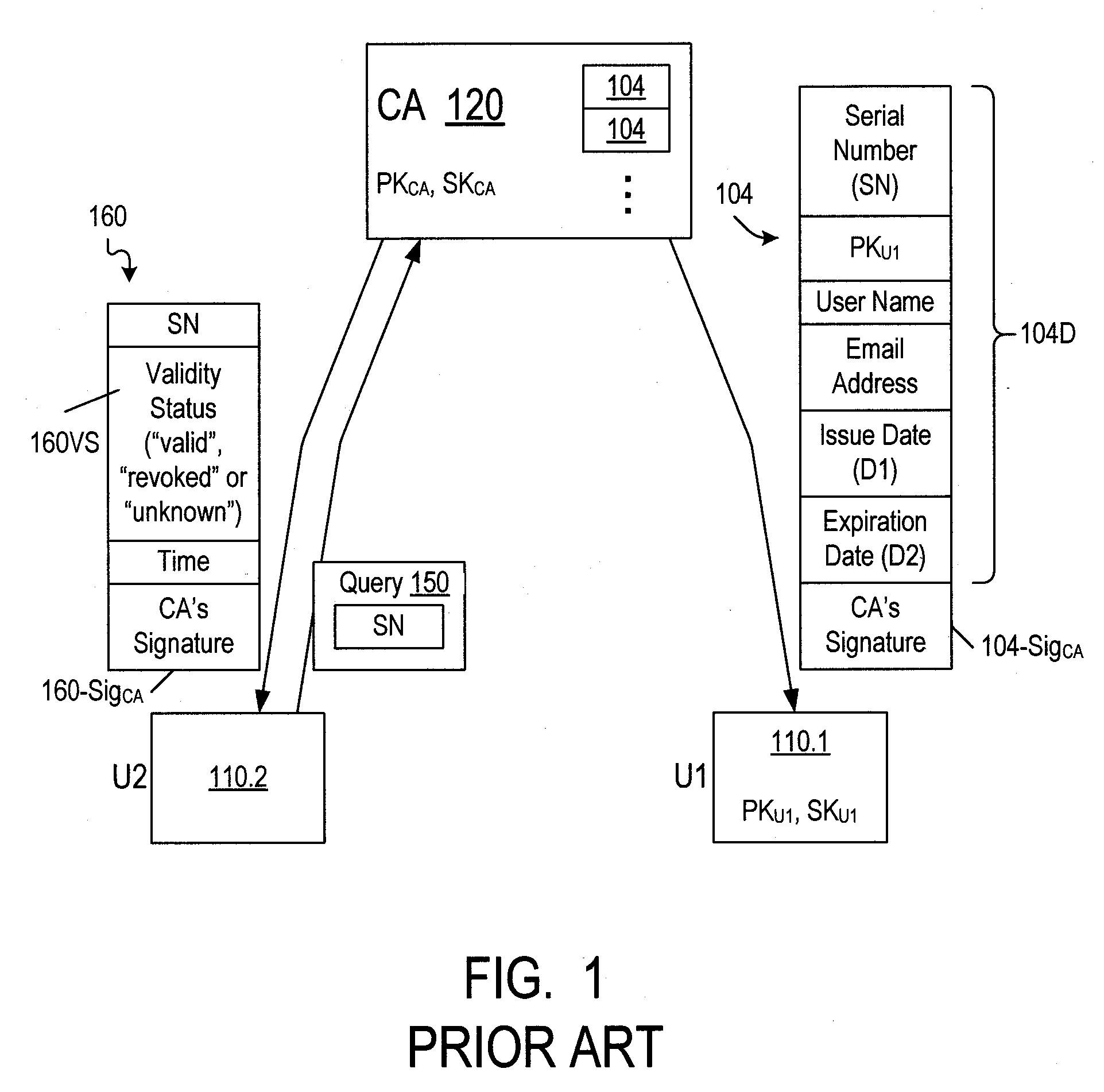Revocation of cryptographic digital certificates
a cryptographic and digital certificate technology, applied in the field of public key cryptography, can solve the problems of unwieldy crl management with respect to communication, search, verification costs, and inability to add new certificates, and achieve the effects of facilitating multicast transmission, efficient distribution of certificate validity proofs, and maximizing the number of sets
- Summary
- Abstract
- Description
- Claims
- Application Information
AI Technical Summary
Benefits of technology
Problems solved by technology
Method used
Image
Examples
Embodiment Construction
[0054]The embodiments described in this section illustrate but do not limit the invention. The invention is defined by the appended claims.
[0055]We will assume that the CA 120, the directories 210, the systems 110 are computer systems communicating with each other over a network or networks. Each of these systems may itself be a computer system having components communicating over networks. Each computer system includes one or more computer processors executing computer instructions and manipulating computer data as described above and below. The term “data” includes “computer data” and covers both computer instructions and computer data manipulated by the instructions. The instructions and data can be stored on a data carrier such as a computer storage, i.e. a computer readable medium (e.g. a magnetic or optical disk, a semiconductor memory, and other types of media, known or to be invented). The data carrier may include an electromagnetic carrier wave transmitted through space, vi...
PUM
 Login to View More
Login to View More Abstract
Description
Claims
Application Information
 Login to View More
Login to View More - R&D
- Intellectual Property
- Life Sciences
- Materials
- Tech Scout
- Unparalleled Data Quality
- Higher Quality Content
- 60% Fewer Hallucinations
Browse by: Latest US Patents, China's latest patents, Technical Efficacy Thesaurus, Application Domain, Technology Topic, Popular Technical Reports.
© 2025 PatSnap. All rights reserved.Legal|Privacy policy|Modern Slavery Act Transparency Statement|Sitemap|About US| Contact US: help@patsnap.com



